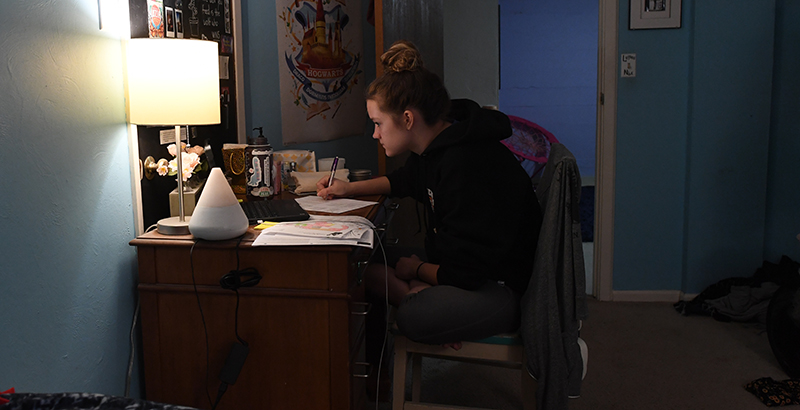An Educator’s View: Teaching Is Hard. Teaching Teens Remotely From Home Is Harder. 5 Things We’ve Learned to Help Make It Easier

Teaching is hard. Teaching a classroom full of teenagers from your living room is even harder.
When the pandemic shut down our schools on March 13, our 4,000 high school students saw their normal lives change drastically. Like so many others, they were only a few weeks away from taking the College Board’s Advanced Placement exams that could earn them college credit and determine which universities ultimately would accept them.
In the weeks since then, I’ve had the opportunity to watch our teachers and leaders in action online, and we’ve learned a lot about what works — and what doesn’t. Through trial and error, our teachers have honed techniques and strategies to increase the quality of student engagement and improve their learning since we began remote instruction.
Here are the five most important lessons we’ve learned about helping teenagers navigate school in this new world:
1. Shorten classes and shorten the day. Before the shutdown, many of our classes had direct instruction for up to 60 minutes. We did this in order to mimic what our students would soon experience in college. When we launched our online high school, we started with 60-minute lessons but soon realized they were too long. We have settled on roughly 20-minute lessons and hold 40 minutes for students to complete their work and get questions answered by the teacher. We also end our day earlier than normal school and make sure students can finish homework that same day to get credit for their work. We don’t want kids working into the night — students should be spending time with family, walking outside (if that’s feasible given social distancing), unwinding and doing the things that renew and refresh them.
2. Whom you call on and how you call on them matters. In the initial weeks, teachers relied on students who “raised their hand” with the technology in order to participate. But that left the vast majority of students unengaged. Teachers re-envisioned a bunch of in-class tricks for the online classroom, like the pre-call — telling specific students that they would be asked that day to answer a question — and rapid-fire call, to alert the next four students in the order they would participate. Teachers also utilize the Zoom chat to have all students answer a question, monitor for understanding and send individual chat messages to students to revise their answers. There’s also the warm call — privately sending a chat message to tell a student to unmute and be ready to answer a question.
3. See them where they are. Early on, we found, as many schools did, that a handful of students didn’t show up for class at all. We quickly realized that no amount of email or text messages sufficed: The one-on-one phone call with the student or a family member was the key lever. We helped to problem-solve around the challenge of learning in environments where there aren’t quiet places to study — or any private places at all. We worked with them to build an individualized plan, including having a buddy (e.g., our phys ed teacher or other noninstructional staff member) to help the student make it through the day. This is still a challenge every single day.
4. Include live and pre-recorded instruction. We polled our students, and we learned that a combination of live teaching and pre-recorded video serves kids best. Many of our students have found that pre-recorded videos of instruction help them because they can pause, take notes, rewind and listen again. Particularly for kids who struggle, being able to replay video has been game-changing. At the same time, requiring interactive portions in each class every day raises student engagement overall and allows kids to connect with people outside their home — an important academic and psychological benefit.
5. Don’t forget the clubs. Teenagers are incredibly social beings. We can’t forget that for high schoolers, this pandemic hit at the same time they were becoming much more independent, likely spending more time with friends and getting far more emotional boosts from other teens than from the adults in their lives. At Uncommon, we relaunched our extracurricular programming online to ensure that kids would continue to be connected to the things that gave them joy — including online cooking, “hip-hop at home” and wellness. Our students have put on their school plays online, participated in national spoken-word contests and continued to pursue their passions, even if it all looks different now. Schools still have the power to help students make emotional connections at a time when we need them to do that the most.
We’re still learning, and this list will grow. In many ways, that is what the coronavirus lockdown has brought us — the opportunity to be a laboratory of innovation, all at the service of our children.
Paul Bambrick-Santoyo is Uncommon Schools’ chief schools officer for high schools and the founder and dean of the Leverage Leadership Institute. He is the author of books about learning, such as “Driven by Data” and “Get Better Faster,” and leads professional development at charter and district schools across the U.S. and the world.
Get stories like these delivered straight to your inbox. Sign up for The 74 Newsletter

;)